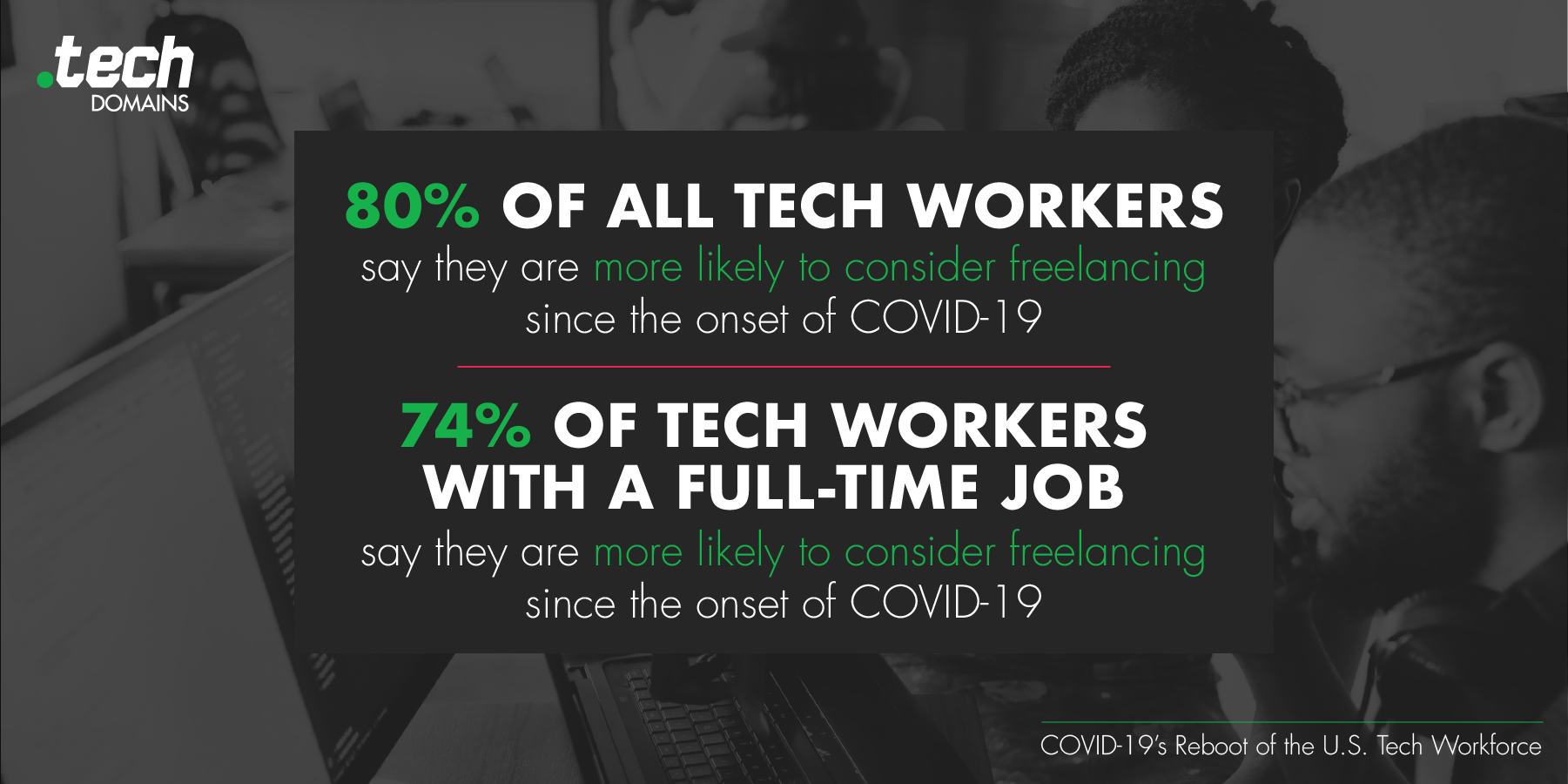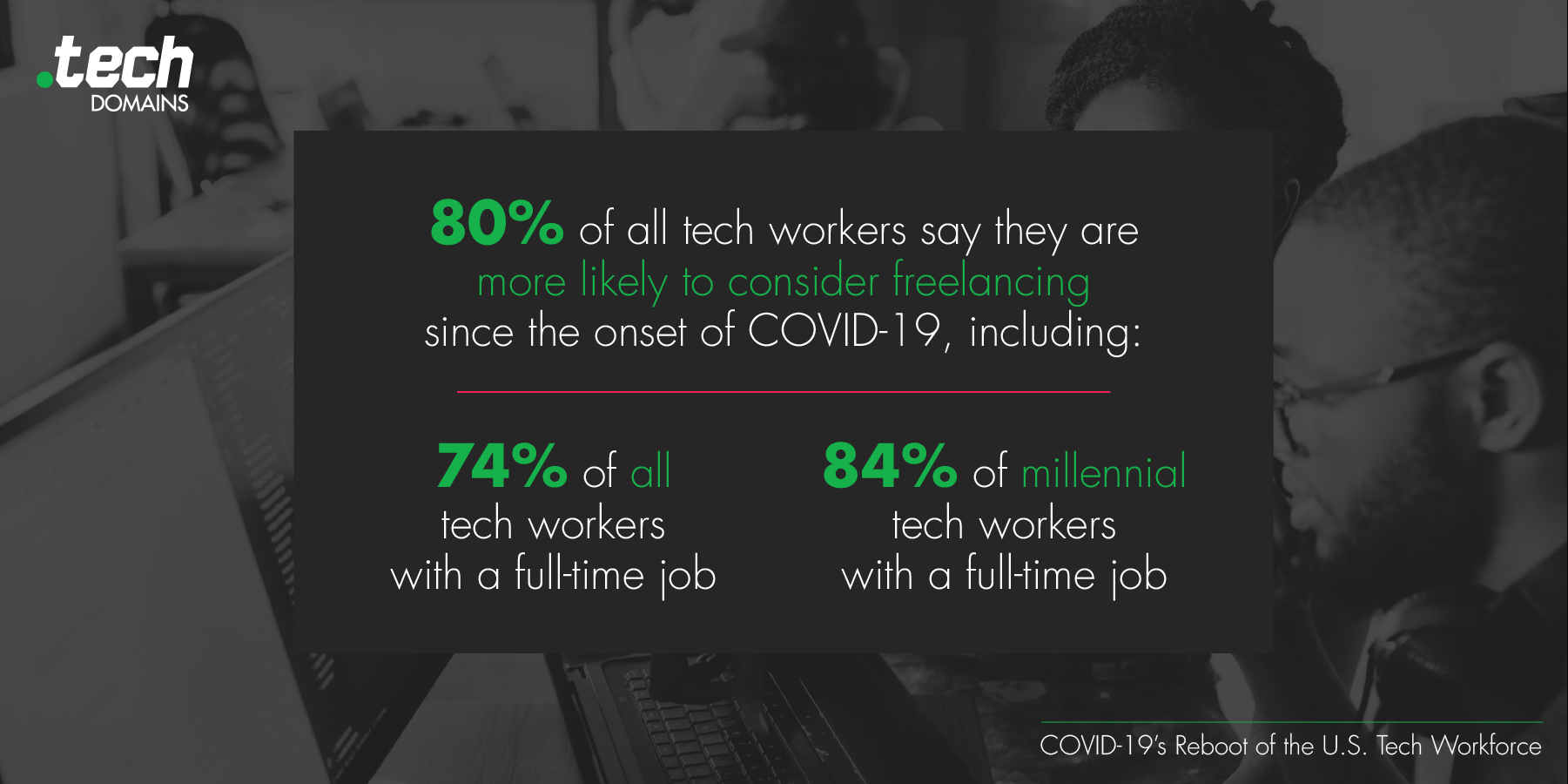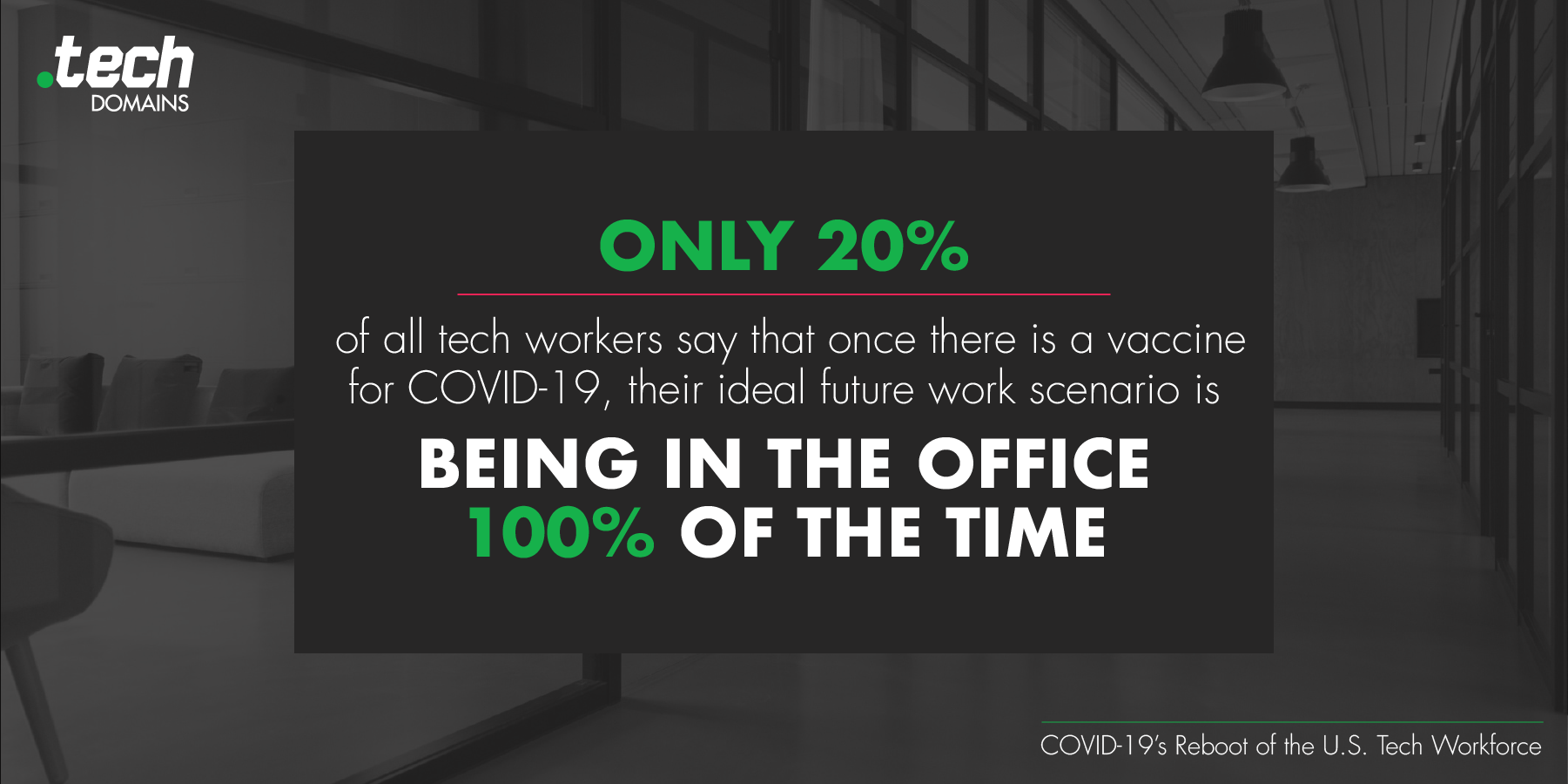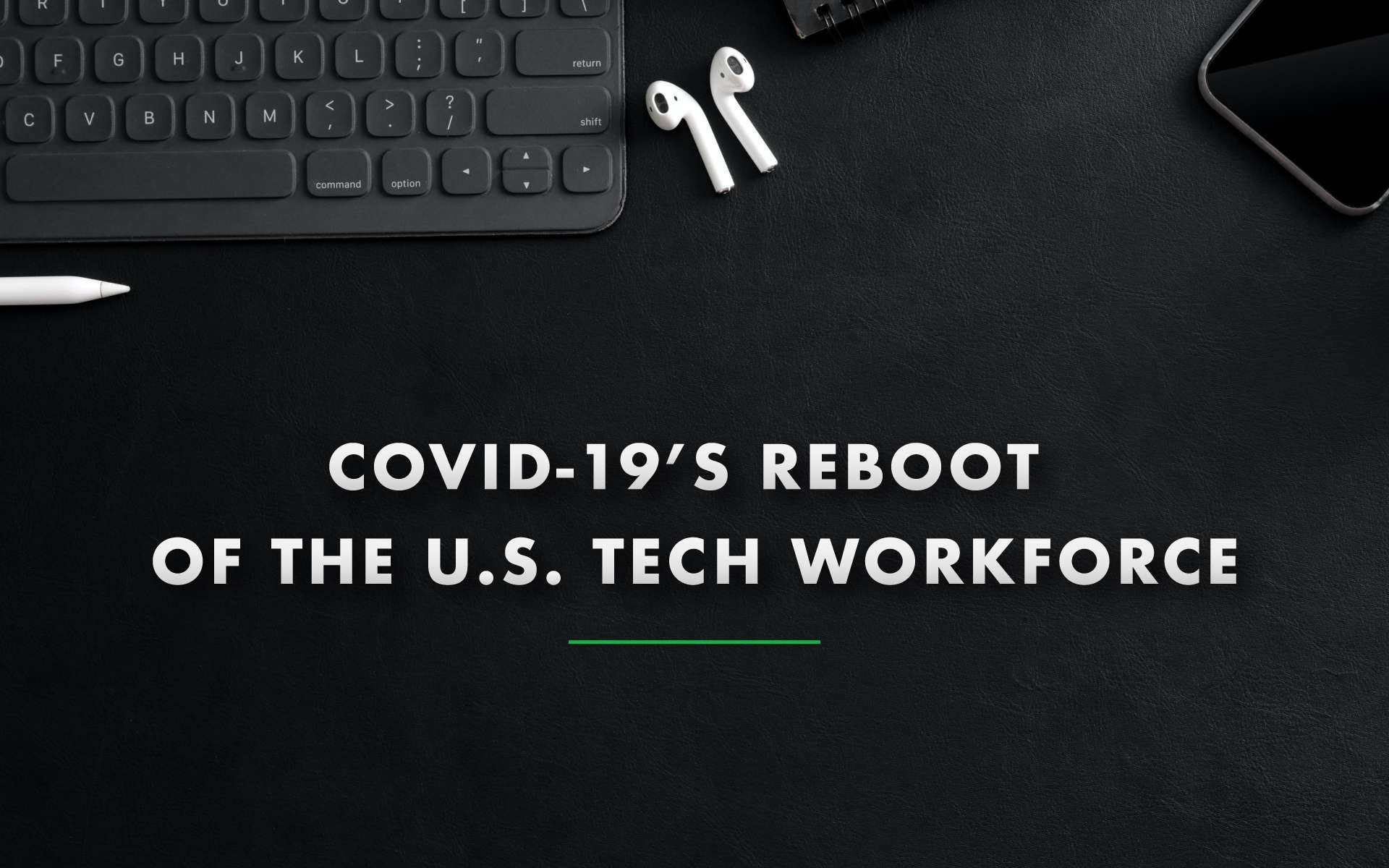COVID-19 has had a massive impact on nearly every facet of life, including the way we work. From configurations being turned upside down overnight as teams were forced into remote environments to the accelerated adoption of critical technologies that enable them to do their jobs from the comfort of their homes, the workforce has experienced an incredible amount of change over the last few months.
And of course, as businesses grapple with the unprecedented challenges and unpredictability that the pandemic has ushered in, millions have been laid off or furloughed as a result.
One sector that has witnessed a particularly big impact is technology. With tech workers accounting for significant portions of tech companies’ costs, many of today’s largest employers of tech talent made the decision early on in the crisis to cut costs through layoffs and furloughs.
And while there have been positive steps forward since then, the recent slashing of 134,000 IT jobs illustrates that the technology workforce’s job security has become another casualty of the crisis.
With this all as a backdrop, we wanted to see just how the crisis is reshaping this cohort which makes up 8% of the total U.S. workforce. To do so, the team at .tech Domains, a new top-level domain name for the tech ecosystem, commissioned the .tech Workforce Reboot Study in August.
Specifically, we surveyed 500 U.S.-based technology workers in IT, Software Development, Internet, and Hardware. The following illuminates some of the key findings and what they mean for workers and the organizations employing them.
81% Of Tech Talent Living Near U.S.’ Top Tech Hubs Looking Towards Relocation
It’s no secret that there’s an exodus of talent taking place in locations like the Bay Area as the pandemic has a catalytic effect on people’s decisions to move to more affordable areas.
However, as the country’s preeminent tech hubs grapple with what this means for their cities and the innovation behemoths that call them home, the potential impact may be greater than they realize.

Our study found that 81% of tech workers living within 30 miles of the country’s biggest tech hubs, including the Bay Area, Seattle, New York City, Boston, Washington, D.C., Austin are considering or have already made plans to move to a more affordable city since the onset of COVID-19.
We’ve already seen examples of companies relocating their headquarters from major tech hubs recently, and we can expect to see more of this as organizations attempt to keep up with the shifts taking place.

With 61% of tech workers saying they are already fully remote the decision to pick up and move has been made all the more easy. And it appears that this new way of work isn’t going to change for this cohort even after the pandemic subsides.
Harvard Business School projects that when the pandemic is over, one in six workers will continue working from home or co-working at least two days a week.
However, with our findings showing that workers are looking to move away from areas where large concentrations of tech companies are, it’s likely that what many have been calling the remote work experiment may become a permanent reality for the tech sector.
Many firms have been quick to embrace the remote philosophy, signaling that they are prepared to adapt to these changes. However, in doing so, they may be also giving rise to factors that ultimately weaken the bonds between themselves and their employees.
74% Of Tech Workers With Full-Time Jobs Considering Freelance And Side Gigs Post COVID
Freelancing has also been on the rise since the onset of the pandemic. In fact, Freelancer.com found that freelance job openings increased over 25% during the April to June quarter of 2020 — compared to the first three months of the year.

80% of all tech workers (those with only a full-time job, those juggling a full-time job with freelance projects/side gigs, and those freelancing exclusively) say they are more likely to consider taking on more freelance work since the onset of COVID-19.
Interestingly, 74% of tech workers who reported that they only have one full-time job say that they are more likely to consider freelance work.
Not surprisingly, it appears that the degree of remote environments workers find themselves in impacts their likelihood of taking on freelance work. Those who reported that they are completely remote were more than 12% more likely to say that they are “much more likely” to consider taking on freelance or project-based work since the onset of COVID-19 than those who reported that they are partially remote (51% vs 38%).
As mentioned above, embracing remote environments may have the unintended consequence of giving employees a wandering eye.
We wanted to see how those tech workers who are juggling a full-time job with freelance or side gigs are marketing their services. 64% said that they are using social media sites like LinkedIn and Twitter to promote their solo services and 1-in-4 (26%) report having their own personal website.
While this may seem obvious on the surface, it raises questions about the conflict of interest with workers marketing themselves as ‘guns for hire’ while they have a full-time job. This may be a signal of the trend already taking place where tech and business influencers who hold prominent roles within companies are spinning out their own services on the side in a very public way.
Leveraging strong personal or employee brands within organizations can create bottom line benefits, even if the company isn’t getting a cut of the proceeds their employees might be making on the side. But it does call into question a company’s ability to drive employee engagement and ensure their workers aren’t compromising their productivity when it comes to their role within the organization.
Will tech employers care in the future if an employee juggles their business and freelance projects during the regular 9-5? If they’re getting all their work done on time, maybe not. In any event, it seems like freelancing on the side is shedding it’s sneaky connotation and becoming the new normal for both employees and organizations.
COVID’s Impact On The Millennial Tech Worker
While the crisis is undoubtedly reshaping things for the entire tech workforce, millennials are taking the full brunt of the impact. According to the Federal Reserve Bank of St. Louis 4.8 million millennials have lost work since the new coronavirus triggered a recession.
Already derailed by the Great Recession of 2008, this cohort has been dealt yet another blow that’s providing new setbacks for their long term career and financial goals.

Our study’s findings illustrate the steps that the millennial tech workforce is taking as a result. 84% of millennial tech workers with a fulltime job report that they are more likely to take on freelance jobs since the onset of COVID-19, which was significantly more than their Gen X and Boomer counterparts.
Millennial tech workers were also nearly 15% more likely than older tech workers to say that they have “seriously considered” moving to a more affordable area since the onset of COVID-19. A recent TD Ameritrade survey found that 39% of younger millennials say they are even planning to or have already moved back in with their parents because of the economic downturn.
If there is a silver lining for millennials it’s two-fold; for one, the flexibility that remote work affords them in terms of their ability to take on either full-time or freelance jobs from wherever they are located.
Secondly, as more companies look to offload their balance sheets and outsource work to freelancers, there is increased opportunity for those looking for these types of jobs.

COVID-19 is driving remote work and causing tech workers to seek out affordable lifestyles. Part and parcel of that is the increase in the desire to take on more freelance work.
While the impact that these trends have on organizations and the hubs that this talent is so crucial to is likely to play out over the coming months, one thing is clear; tech talent isn’t looking to come back to the office in droves once the pandemic subsides.
In fact, only 20% of all respondents say that once there is a vaccine for COVID-19 their ideal future work scenario is being in the office 100% of the time. For organizations, these drastic shifts taking place amongst the workforce they are so reliant on may very well become the new innovator’s dilemma.
Tips For Kickstarting Your Freelance Career
As new ways of work give rise to expanded opportunities for those looking to take on freelance work we wanted to share some tips to help tech workers get the most out of their full or part-time gigs.
1. Expand your digital resume
Our survey found that the number one challenge for tech freelancers is attracting new business. Building a strong profile on freelance marketplaces like Upwork & Freelance.com is a great way to showcase your work and secure jobs.
And while professional networks like LinkedIn are also a necessary piece of highlighting your skills, a personal website [e.g., JoeFreelancer.Tech] will allow you to truly showcase your talent to potential clients in a way that also helps build a strong personal brand that will distinguish you in a highly competitive environment.
2. Beware of the flexibility paradox
One of the biggest allures to freelance work is the ability to be your own boss. Setting your own hours and determining when and how you execute your work can be a tremendous luxury, but it can also be a significant challenge.
In fact, more than 1-in-4 tech workers say the most challenging thing about freelancing is balancing work and life. It’s important to adhere to a firm schedule so you don’t find yourself working when you should be spending time with family or doing other things to maintain a healthy work-life balance.
3. Understand the business side
Many first time freelancers are shocked when they realize all of the ancillary work that comes with a freelance career. One of the first things to understand is that a significant percentage of your income must be set aside for taxes.
It’s crucial to find out what your estimated tax rate is and consider sending out your taxes quarterly to avoid penalties. Freelancers also often underestimate the expenses associated with their projects so make sure to keep tabs on that. In the event, the best rule is to keep meticulous records of money coming in and out.

